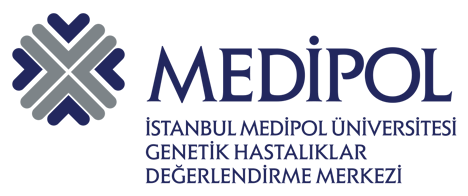International Epilepsy Day
The First Monday of February every year, aims to inform society about epilepsy.
10% of people may have a seizure at some point in their life (Milligan,2021). A seizure is a brief, excessive discharge of electrical activity in the brain that temporarily changes behavior. Epilepsy is defined as a disease characterized by a persistent predisposition to form epileptic seizures and the neurobiological, cognitive, psychological, and social consequences of this condition (Fisher et al., 2005). Factor epileptic disorders such as stroke, asphyxia, infections, autoimmune disorders, trauma, and tumors can trigger seizures (Martinez et al., 2021; Milligan, 2021). Unexplained recurrent seizures or idiopathic epilepsy in the absence of an acquired cause its presence raises strong suspicion of an underlying genetic abnormality. (Thomas and Berkovic, 2014). It is suggested that genetic causes constitute at least 30% of epilepsies (Orsini et al., 2018). According to various databases (OMIM, HGMD, and EpilepsyGene) and recent publications in PubMed, approximately one thousand (1000) genes have been associated with epilepsy (Wang et al., 2017)

The prevalence of epilepsy globally is estimated to be approximately 1%. According to this estimate, 700,000 people in Turkey have epilepsy. It is estimated that about 65 million people in the world have epilepsy. It is thought that 80% of these patients live in developing countries and 40-70/100.000 new cases are added to this number every year (Öztürk, 2021).
Evaluation of a patient presenting with seizures; This includes excluding an underlying neurological or medical condition, classifying the seizure type, and determining whether the patient has epilepsy. Molecular diagnosis can provide a more accurate treatment option and provide information about other accompanying abnormalities. It also helps in identifying risky individuals in the family.
References
Fisher, R. S., Van Emde Boas, W., Blume, W., Elger, C., Genton, P., Lee, P., Engel, J.
2005. “Response: Definitions proposed by the International League Against
Epilepsy (ILAE) and the International Bureau for Epilepsy (IBE) [4]”.
Epilepsia, 46(10), 1701–1702.
Martinez, L. A., Lai, Y. C., Holder, J. L., Anderson, A. E. 2021. “Genetics in Epilepsy”.
Neurologic Clinics, 39(3), 743–777.
Milligan, T. A. 2021. “Epilepsy: A Clinical Overview”. American Journal of
Medicine, 134(7), 840–847.
Myers, C. T., Mefford, H. C. 2015. “Advancing epilepsy genetics in the genomic
era”. Genome Medicine, 7(1), 1–11.
Orsini, A., Zara, F., Striano, P. 2018. “Recent advances in epilepsy
genetics”. Neuroscience Letters, 667, 4–9.
Thomas, R. H., Berkovic, S. F. 2014. “The hidden genetics of epilepsy – A
clinically important new paradigm”. Nature Reviews Neurology, 10(5),
283–292.
Wang, J., Lin, Z. J., Liu, L., Xu, H. Q., Shi, Y. W., Yi, Y. H., … Liao, W. P. 2017.
“Epilepsy-associated genes”. Seizure, 44, 11–20.
Öztürk,Ş. “22 TEMMUZ DÜNYA BEYİN GÜNÜ: EPİLEPSİ; “BİZİM BEYNİMİZ – BİZİM GELECEĞİMİZ”. Türk Nöroloji Derneği.

